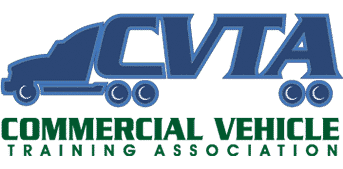To keep themselves and others safe on the road, commercial truck drivers must follow all state and federal regulations, including truck weight limits. Most commercial vehicles need to stop at weigh stations, known to truckers as “chicken coops,” to ensure compliance. If you’re a rookie truck driver ready to encounter your first chicken coop, this blog outlines the basics of weigh stations.
The Purpose of Weigh Stations
Most states require all trucks and commercial vehicles with a gross weight of over 10,000 pounds to stop at every open weigh station located along their route. The purpose of these stations is safety. Heavy semi-trucks are harder to control and more dangerous on the roads, both for the trucker and other drivers around them. Safety is especially a concern in the winter when road conditions are less than favorable. Weight stations also help prevent damage to roadways due to overweight trucks.
Weigh Station Process
Once you are familiar with the process, navigating weigh stations will easily become part of your routine as a trucker. The process can be broken up into three main phases: approaching the weight station, weighing your rig, and inspecting the vehicle.
Phase One: Entering the Weigh Station
As you drive along the highway on your route, you will see roadside signs indicating that a weigh station is approaching. If the station is closed, you do not have to stop but if the station is open, you are required to exit. After pulling off the highway, follow the posted weigh station signs or instructions from officials that lead you to the scale.
Phase Two: Weighing the Truck
As you drive toward the scale, follow the posted speed limit and instructional signs. Some scales require you to bring your vehicle to a complete stop, while others can function if your truck is moving slowly. Once on the scale, it will check your total weight and how much weight is on each axle.
Phase Three: Inspecting the Truck
After you weigh your vehicle, your Department of Transportation (DOT) number is entered into a computer system to ensure your log is accurate. Your safety rating, equipment, and log book will also be verified. If you pass over the scale at the correct speed with an underweight load and pass the inspection, you will be sent to the bypass lane and can continue your route.
What Happens If Your Truck is Overweight?
If the scale indicates that your truck is overweight, you must pull over to the side until a solution is determined. Federally, this is over 80,000 pounds, although some states have lower gross limits. Your motor carrier can either purchase an overweight permit or send a relief driver to take the excess weight. You will not be allowed back on the road until the issue is resolved. An overweight assessment comes with a citation, fine, and points against your Compliance, Safety, and Accountability (CSA) score.
How to Avoid an Overweight Citation
The best way to ensure that your semi-truck is within the weight limit is to be prepared. Completing a thorough pre-trip inspection before you head out on each route is the best way to do so. You should also weigh your truck after loading. Many truck stops have scales, and if weight is an issue, you can adjust your axles or go back to the shipper to avoid an overweight citation at a weigh station.
Start Your Commercial Trucking Career Today
The demand for truck drivers is growing. If you are interested in starting your career in commercial truck driving, let our experienced instructors at Phoenix Truck Driving School teach you everything you need to know. When you earn your commercial driver’s license at our Albuquerque location, we can get you on the road in as little as four weeks.
To learn more about our available CDL programs, contact us today.



